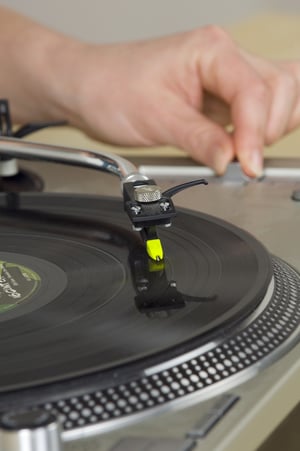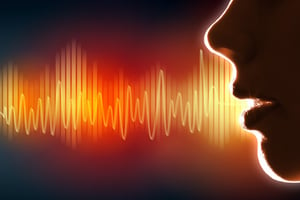Time to Read: 8 Minutes
by Christo Fourie
Even though digital hearing aids have started appearing in 2006 thanks to Widex, and are now the only type of hearing aid available, there are a handful of users who still swear by their analogue hearing aids.
Many of these trusty analogue devices are held together by tape and glue and I believe there might even be an underground trade in old analogue hearing aids and parts for those refusing to move to digital hearing aid technology.
 Why you would want an analogue hearing aid over digital?
Why you would want an analogue hearing aid over digital?
Those who swear by analogue hearing aids have told me that digital hearing aids don't sound as rich or clear as their trusty, but ageing analogue model.
Some people, and even some clinicians I have spoken to, might think this is all in their heads. In reality they actually might have a point. To understand why, one needs to understand the difference between analogue and digital hearing aids, especially as it relates to sound quality. It also helps to understand the user, who is aware of these differences and how clinician training might be letting them down.
Digital vs analogue hearing aids, which is better?
Most people would immediately say digital, as we have all experienced the change in quality from VHS, to DVD to Blue Ray to Streamed 4K movies. Similarly we have experienced ever improving music quality via CDs (although there are purists audiophiles who swear by Vinyl).
Digital hearing aids can certainly process sound and change sound by reducing background noise and changing programs automatically, while picking up a wider range of sounds than any analogue hearing aid could ever muster.
The people who prefer analogue hearing aids aren't audiophiles. Most of them would have moderate or worse hearing loss and have been wearing hearing aids for the last 20 or more years.
So what is going on here if digital hearing aids can do so much more than analogue hearing aids?
 There are several possible reasons, which can occur in isolation, or in combination, depending on the individual.
There are several possible reasons, which can occur in isolation, or in combination, depending on the individual.
1. Understanding the person
With moderately severe or worse sensorineural hearing loss, your ability to pick up small differences in sound quality and intensity is actually better than someone who has better hearing. You also are very reliant on the hearing aid as without it, you cannot hear any speech. Any change to your hearing can cause severe anxiety and concern as it might take away your ability to communicate. As such, you may not be willing to tolerate a change that is too large or uncontrolled. You may also not be willing to take the time to "just get used to it" as you will be unable to communicate effectively during this time, which could be weeks or months.
2. You first tried switching to digital hearing aids too early
Digital hearing aids have been improving by leaps and bounds since their initial release. Because digital hearing aids basically rely on a very small computer in the hearing aid to process the sound, the computer was initially quite limited. This meant the amount of sound had to be restricted to fit into what the computer could handle.
For someone used to and reliant on an analogue hearing aid, these limitations were very obvious and could in many cases not be tolerated. Accepting that would mean accepting lesser hearing until technology caught up.
3. Your hearing specialist did not understand you
Most good hearing specialists are trained to restore hearing - using hearing aids and other available tools - back to as close to normal as possible. This is perfect for 90% of the hearing aid wearing population, if done as part of a hearing rehabilitation program.
But what is good for most IS NOT good for some. If you have worn hearing aids for most or all of your life, then your normal is not everyone else's normal. Your normal is what your last set of hearing aids provided.
A clinician who does not understand this will often try to counsel you by saying you just need time to get used to the new sound, rather than making sure the aid is set to represent YOUR "normal".
4. Too much too soon
Another common mistake I see is trying to fit someone, who has been used to an analogue hearing aid, with limited automatic features, with all the bells and whistles. Suddenly the user goes from feeling like they understand and have control over how the hearing aid is working, to being completely out of control. This could obviously create a lot of anxiety in even the most level headed person.
Modern hearing aids also have a much wider range of sounds they give the user compared to analogue hearing aids. If you've "never" heard these sounds before, trying to restore them fully can mean the aid sounds tinny or distorted.
Tips for making the switch from Analogue to Digital hearing aid technology

1. Find a hearing specialist who is willing to listen rather than dictate what should be done. This way
2. Get the clinician to match your previous hearing aid's performance, rather than some "normal" target. This is best done using real ear measurements. They can follow you at your pace and slowly optimise the volume for you. .
3. Get the clinician to set the digital hearing aid up with the least possible modern adaptive features, rather than everything turned on at once. This will help if perform more like your analogue hearing aid without any "Automatic" surprises.
4. Use only the most recent hearing aids as older models might not be able to deliver the sound quality you'd need.
5. Make sure you take the service inclusions into account as you'd need a number of visits over time to gradually turn on the digital features as your brain adjusts to the improved capabilities.

